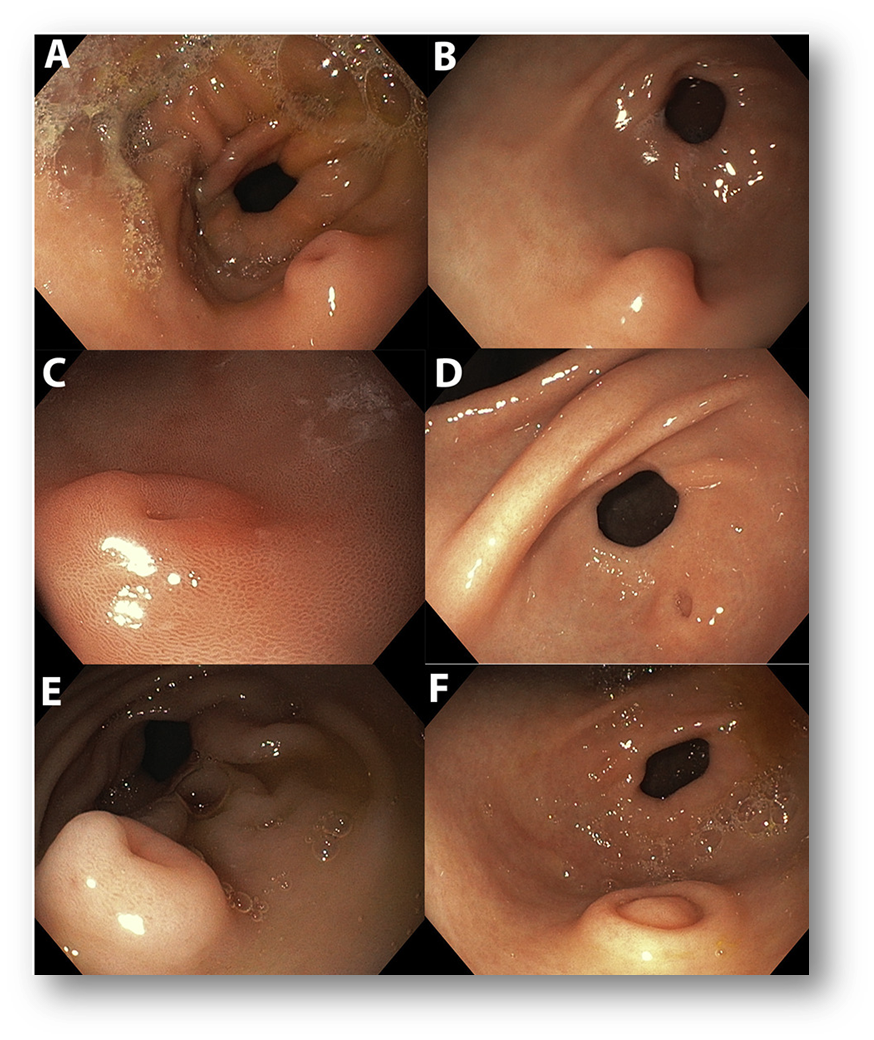week 5- pancreas, lower GI inflammation
1/25
There's no tags or description
Looks like no tags are added yet.
Name | Mastery | Learn | Test | Matching | Spaced |
|---|
No study sessions yet.
26 Terms
what causes mucosal inflammation?
autoimmune (eg. IBD), Infective, disuse/diversion colitis, ischemic colitis, drug-induced, luminal occlusion
colitis= inflammation of colon
what causes lumenal obstruction and what are its 2 categories?
•Lymphoid hyperplasia
•Faecolith (hard, stone-like mass of calcified fecal matter)
•Foreign body (faeces)
•Tumour
2 categories:
Chemical-induced inflammation
Bacterial-induced inflammation
describe the presentation of Lower GI inflammation
Mucosal Inflammation
•Mucosal disruption
•Bleeding
•Bacterial translocation
•Reduced mucosal function
•Secretory/ reduced absorption -> diarrhoea
•Nutritional failure
Transmural Inflammation
•Peritonitis/ perforation
•Acute obstruction
Late Presentation
•Stricture/ fibrosis
•Fistulation
•Cancer
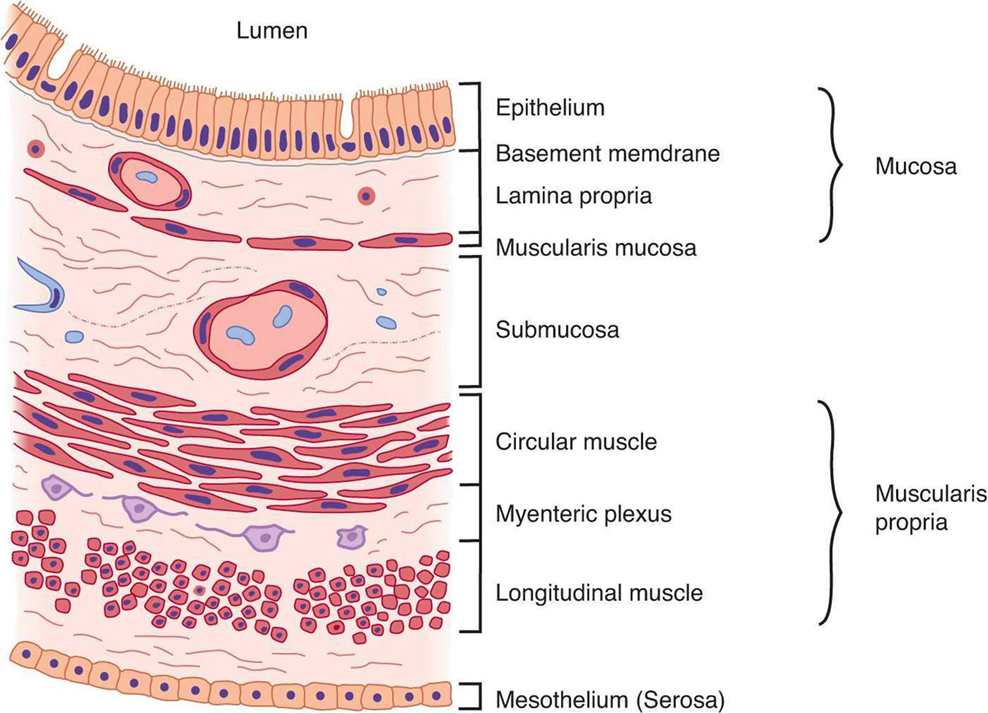
explain the evolution of abdominal findings
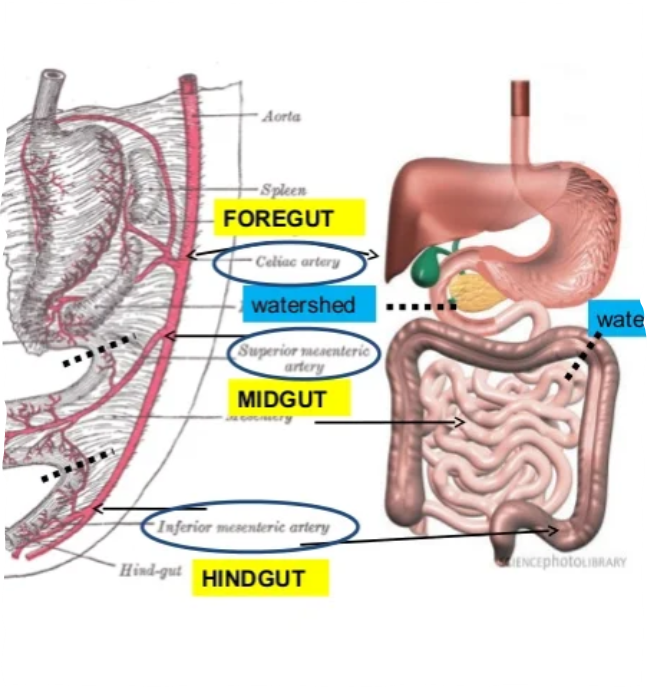
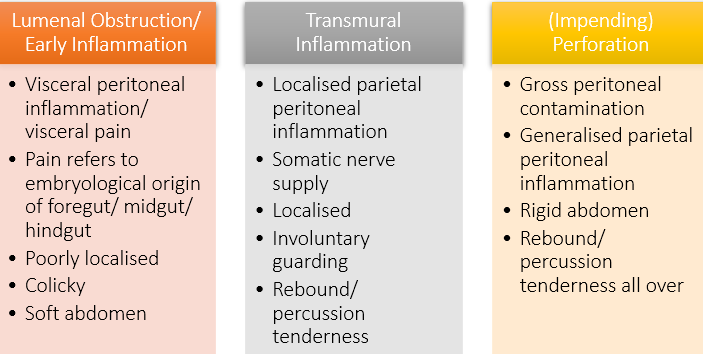
describe the Clinical course and histological differences between Ulcerative Colitis and Crohn's diseases and determine the role of surgery in management of IBD (UC and Crohn’s are 2 examples of IBD)
Ulcerative Colitis | Crohn's Disease | |
Site | Colon Continuous | Entire GI tract, including perianal Skip lesions |
Inflammation | Mucosal/ submucosal Involves mesentery No granulomas | Transmural Presence of granulomas |
Intent of surgery | Curative | Management of complications (strictures, fistulae, abscess) |
explain the surgical considerations in Ulcerative Colitis
•Approx. 10% of patients within 10 years will require surgery
•Surgery is curative
•Indications
Fulminant/ toxic colitis
Medical refractory
Patient preference
Complications (dysplasia, cancer...)
•Extent of surgery is dependent on presentation
Emergency/ urgent => subtotal colectomy
Elective => panproctocolectomy
•Can consider restorative procedure
(A panproctocolectomy removes the entire colon and rectum, while a total colectomy removes only the entire colon, leaving the rectum intact)
explain the surgical considerations in Crohn’s disease
Up to 75% of patients with Crohn's disease will eventually require surgery
•Not curative as may recur anywhere
•Intentions of surgery
Relieve complications
Maintain quality of life
Preserve gut length and nutritional competence
•High risk of complications, including fistulation/ intestinal failure
•Generally not feasible to perform a restorative procedure following proctocolectomy (permanent stoma)
describe the management of lower GI inflammation
•Stepwise approach – conservative > invasive
•Treat underlying pathology if possible
•Fluid resuscitation/ anticoagulation
•Antibiotics
•Immunosuppression
•Cessation of offending drug
•In event of failure, surgery not always required
•Interventional radiology
•Sometimes surgery is the answer!
name the regions where the duodenum, pancreas and spleen are found
Duodenum
•Epigastric region, umbilical region
Pancreas
•Epigastric, left hypochondrium, umbilical region
Spleen
•Left hypochondrium
•Protected by ribs 9-11
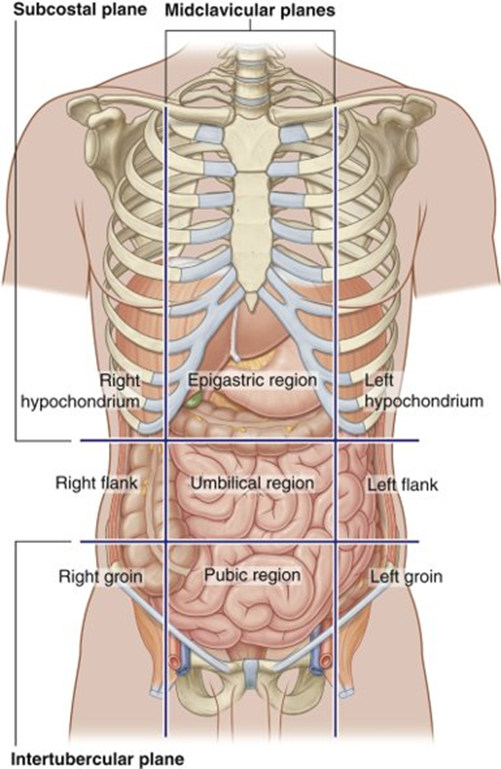
All in the right and left upper quadrants
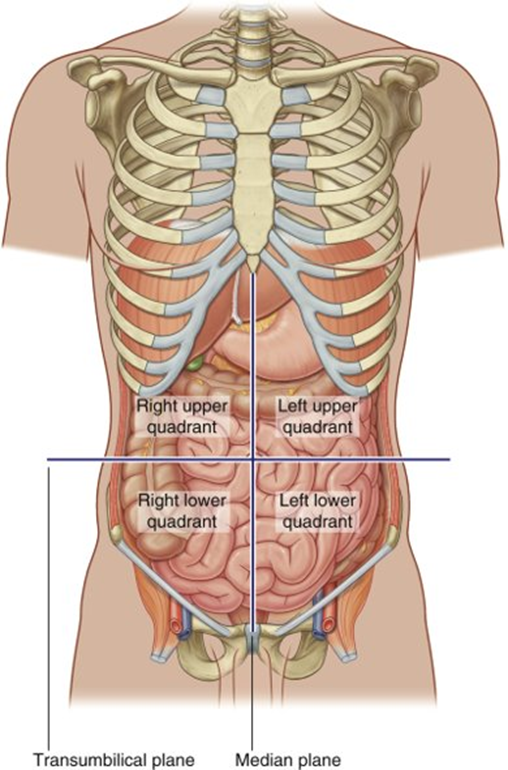
the duodenum and pancreas also Partly sit in the transpyloric plane
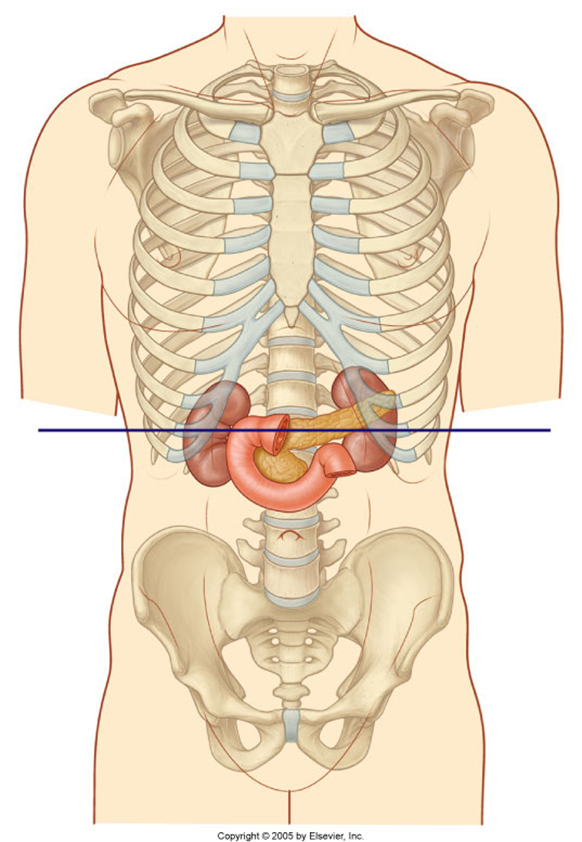
describe the gross structure of the duodenum
•From the pylorus to duodenojejunal junction.
•25cm long, C-shaped, around the pancreas, vertebral level L1-3
•Mostly retroperitoneal
4 parts: Superior, descending, inferior, ascending
1st part - superior
•5cm long
•From pylorus to superior duodenal flexure
•2.5cm intraperitoneal (duodenal cap),2.5cm retroperitoneal
2nd part – descending
•8cm long, between superior and inferior duodenal flexures
•Major (openings from the common bile duct) and minor (openings from the pancreas) papillae
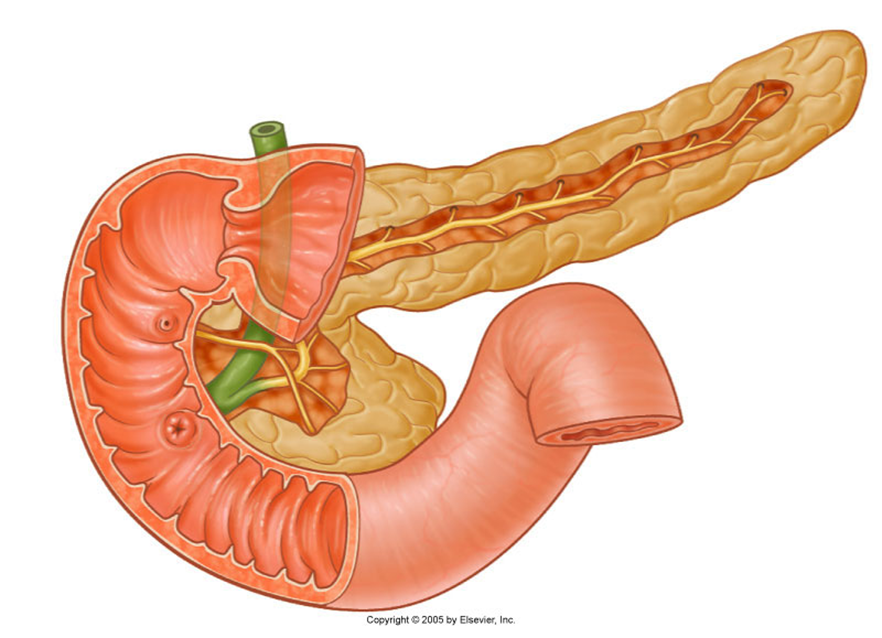
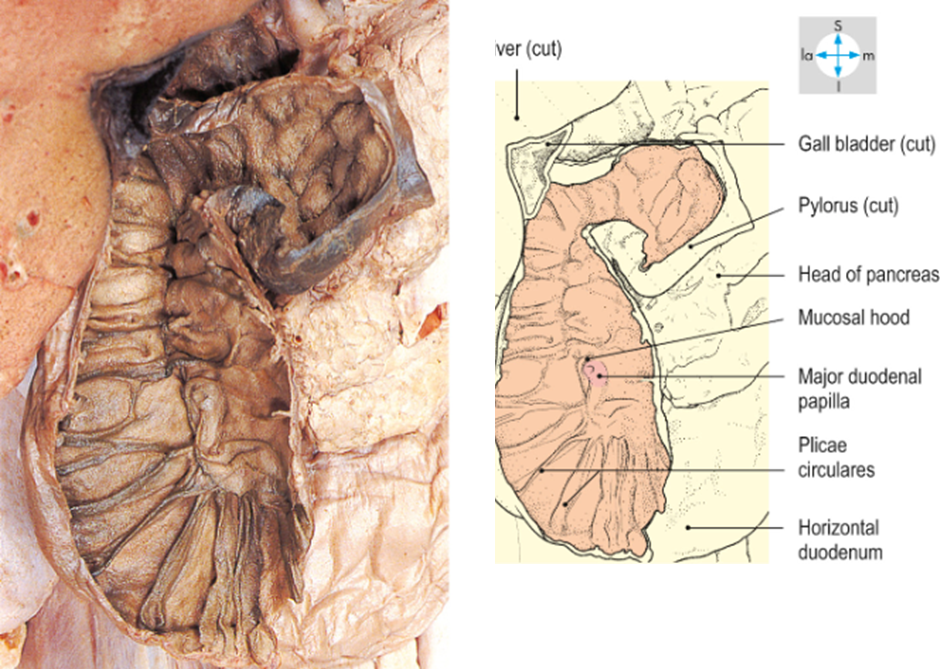
•In the major papillae the ampulla (of Vater) is found, a ductal structure that forms from the union of the common bile duct and the pancreatic duct
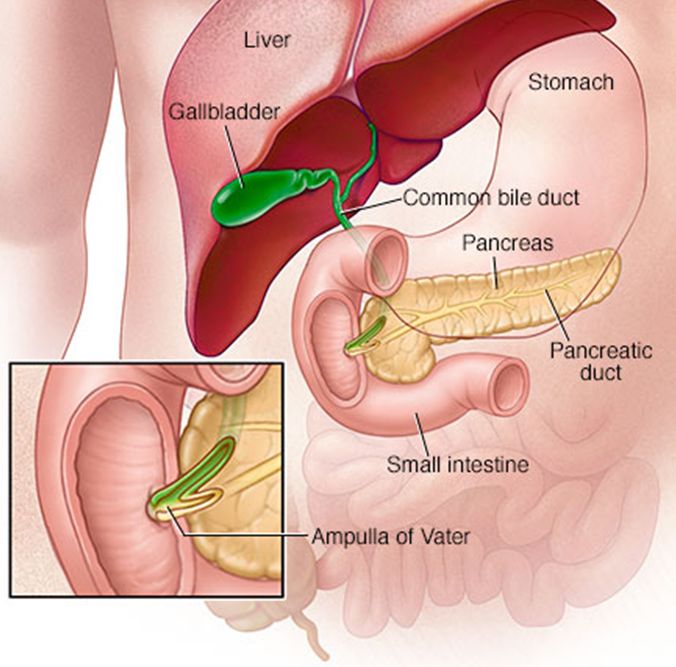
3rd part – inferior (horizontal)
•10cm long
•Inferior to the pancreas
•Coursing left
4th part – ascending
•2.5cm long
•To duodenojejunal flexure at L2
•Suspensory muscle of the duodenum attaches to the crus of the diaphragm
describe the gross structure of the pancreas
•Retroperitoneal organ
•15cm long, sits within C-shaped, of duodenum
•Lies obliquely at vertebral level L1-2
•5 parts: head, neck, body, tail, uncinate process
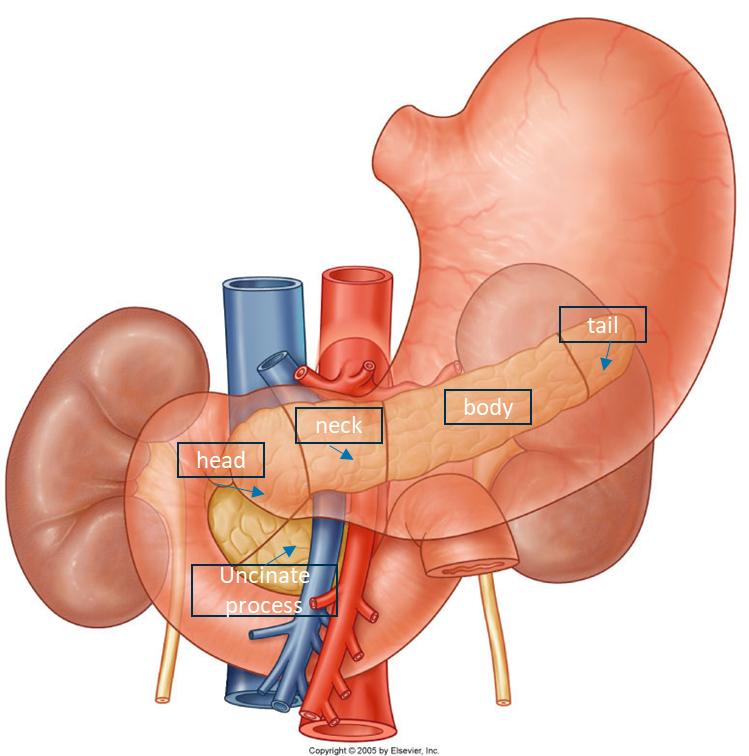
•The neck is anterior to the confluence of the superior mesenteric vein and splenic vein which come to form the hepatic portal vein
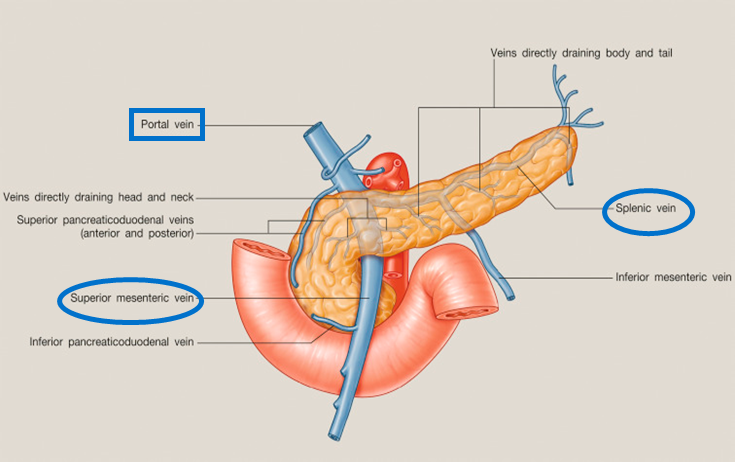
•General glandular appearance
describe the Internal system of ducts
•Main pancreatic duct
(Becomes wider the closer it gets to the duodenum/terminal portion/the head)
Meets the bile duct at the hepatopancreatic ampulla
Major duodenal papilla
•Accessory pancreatic duct
Connects with main duct
Minor duodenal papilla
Sometimes not present
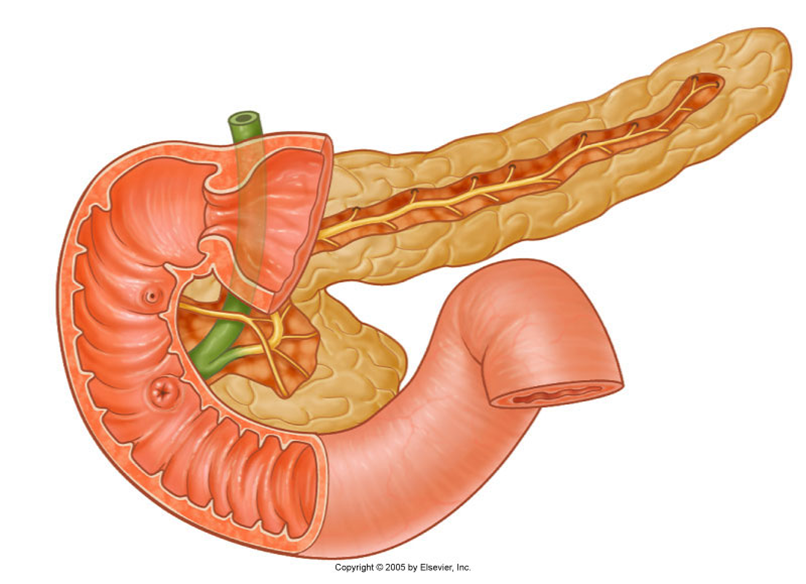
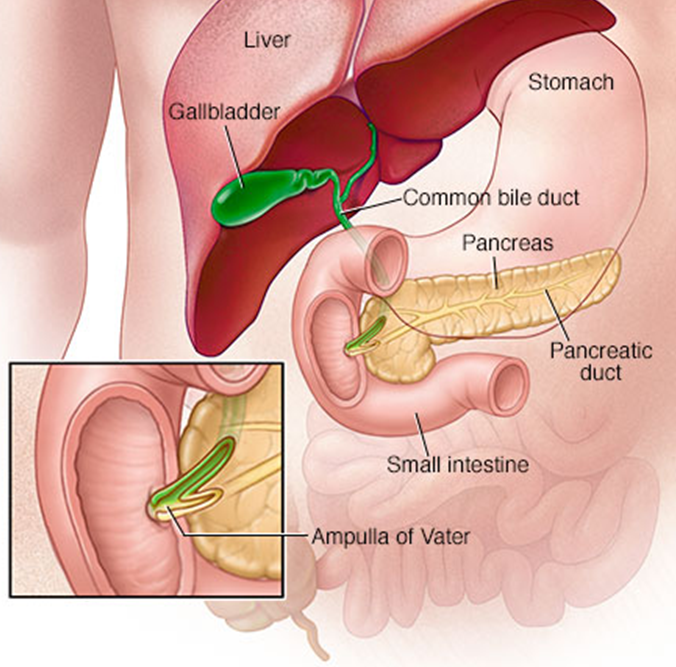
describe the gross structure of the spleen
•Largest lymphoid organ
Size varies
•Thin capsule
•Diaphragmatic and visceral surfaces
Separate ‘areas’ and surfaces
•Intraperitoneal
•Gastrosplenic ligament (thickening of the greater omentum)
•Splenorenal ligament (thickening of the greater omentum)
•Phrenicosplenic ligament
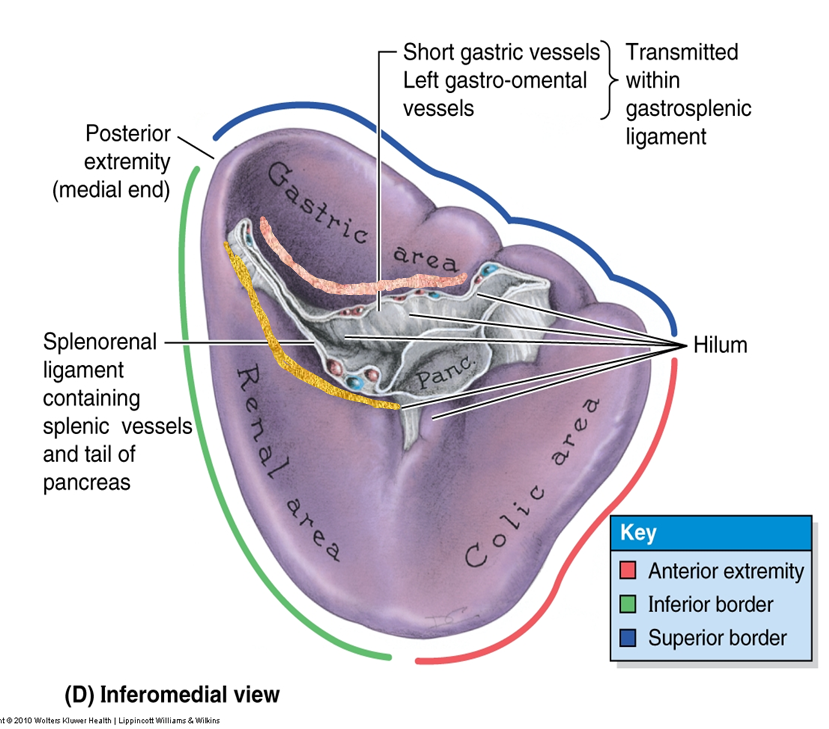
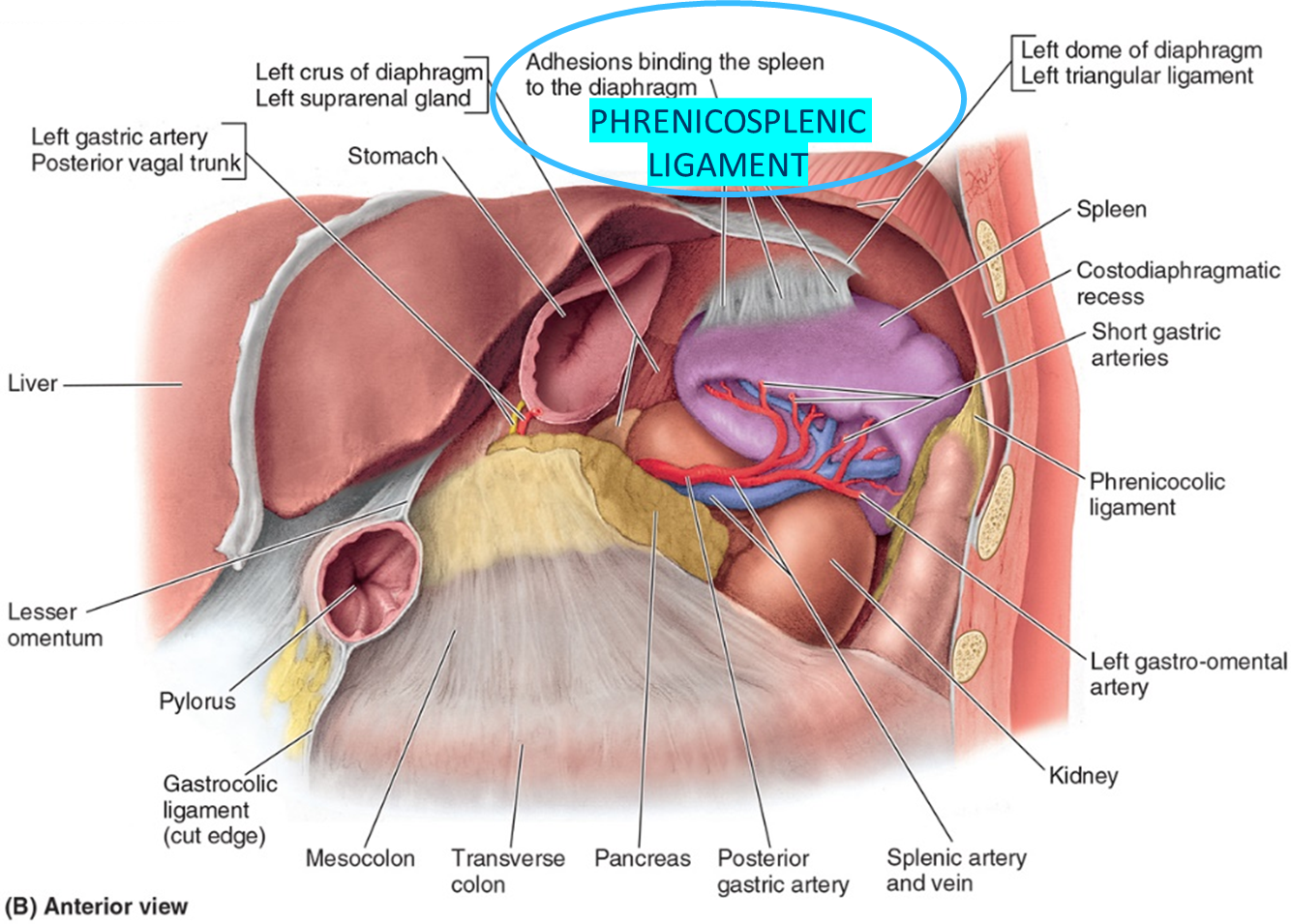
List the key anatomical structures related to the spleen.
•Stomach – anterior to the spleen
•Kidney –medial and inferior to the spleen
•Colon- at the splenic flexure, medial and anterior
•Pancreas- the tail is medial
•Diaphragm and ribs - lateral to spleen
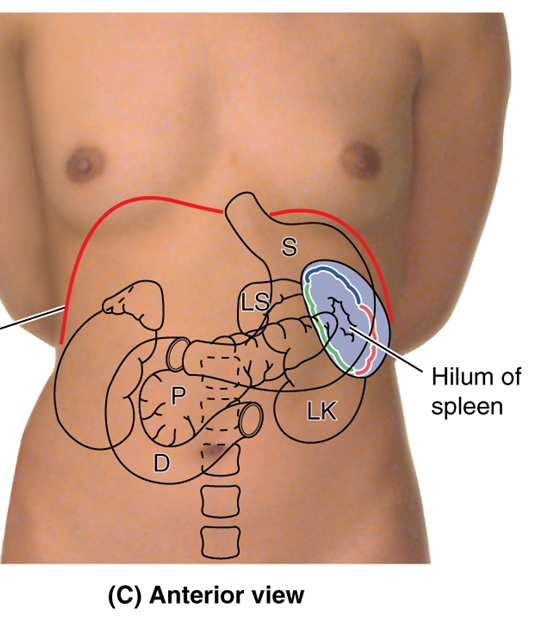
List the key anatomical structures related to the pancreas and duodenum
•Stomach- anterior to the pancreas and duodenum
•Lesser sac- anterior to the pancreas and duodenum
•Transverse colon- anterior to the pancreas and duodenum
•Aorta/IVC- posterior to the pancreas and duodenum
•Kidney/ureter- closely associated with the superior and descending parts of the duodenum, and lateral to the head of the pancreas
•Gall bladder- anterior to the first part of the duodenum
•Bile duct- duct within/posterior to pancreas, posterior to duodenum
•Superior mesenteric artery/vein- posterior to the neck and body, but become anterior to the head and uncinate process of the pancreas, anterior to the duodenum
•Celiac trunk- superior to the pancreas
•Gastroduodenal artery- posterior to the superior portion of the duodenum, superior to pancreas
•Splenic vein- posterior to the pancreas
•Hepatic portal vein - posterior to the pancreas
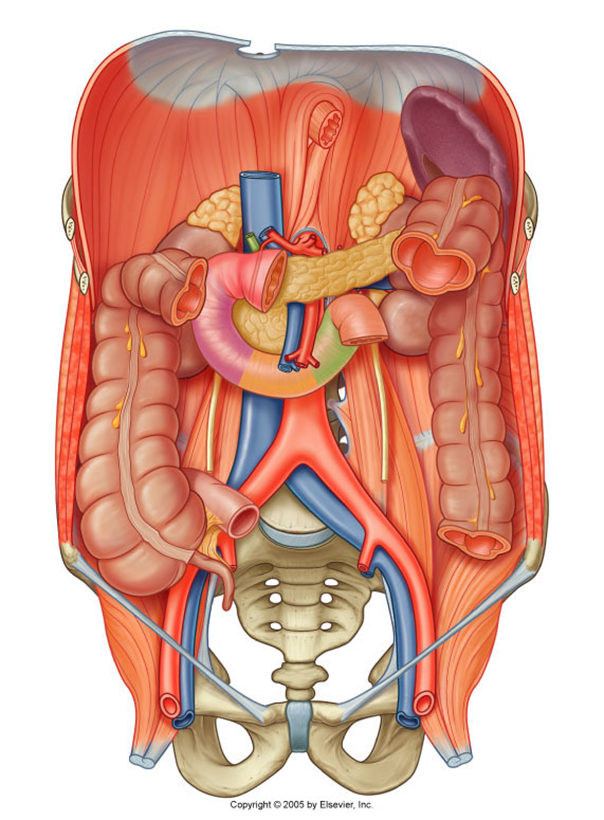
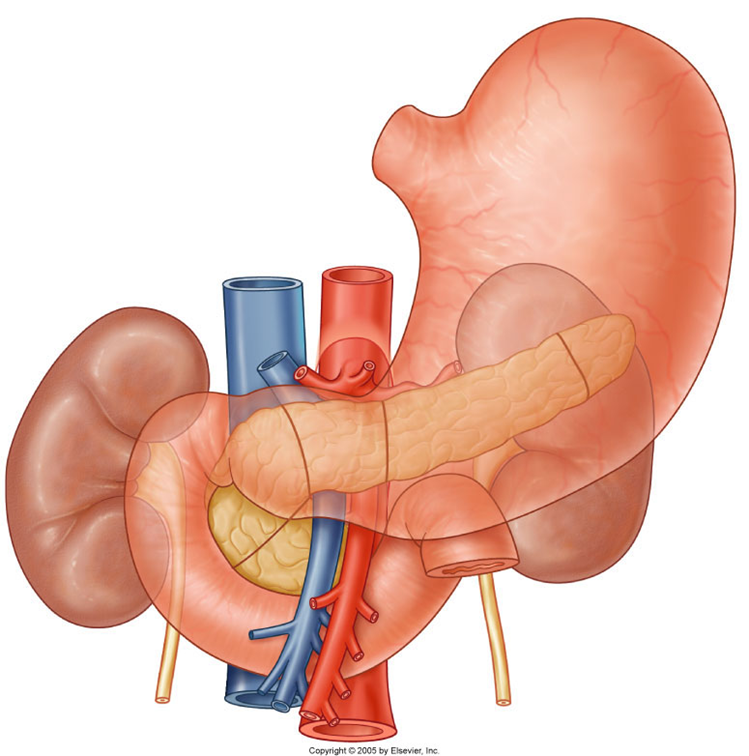
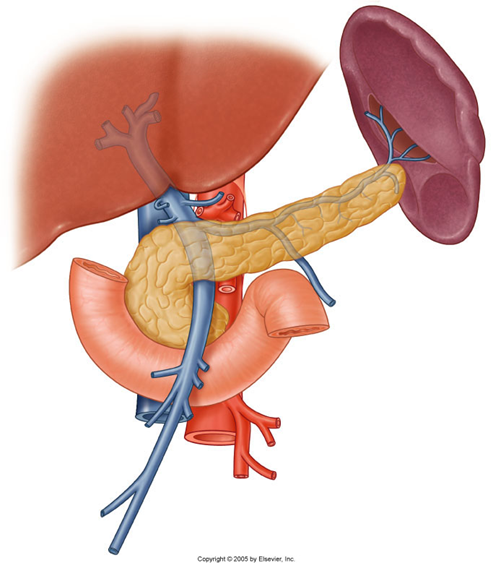
describe the blood supply of the spleen, pancreas and duodenum
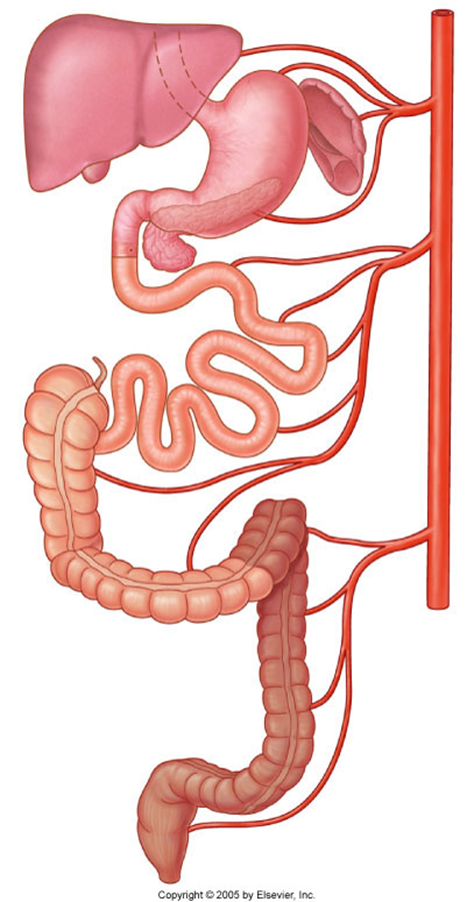
Celiac Trunk
•Splenic artery – spleen
•Dorsal pancreatic artery/pancreatic branches – pancreas neck/body/tail
•Gastroduodenal artery
•Anterior/posterior superior pancreaticododenal arteries – pancreas head/uncinate process, duodenum
•Small pancreatic branches – pancreas
•Retroduodenal branches/supraduodenal artery – proximal duodenum
it only supplies the first 2 parts of the duodenum (superior and descending)
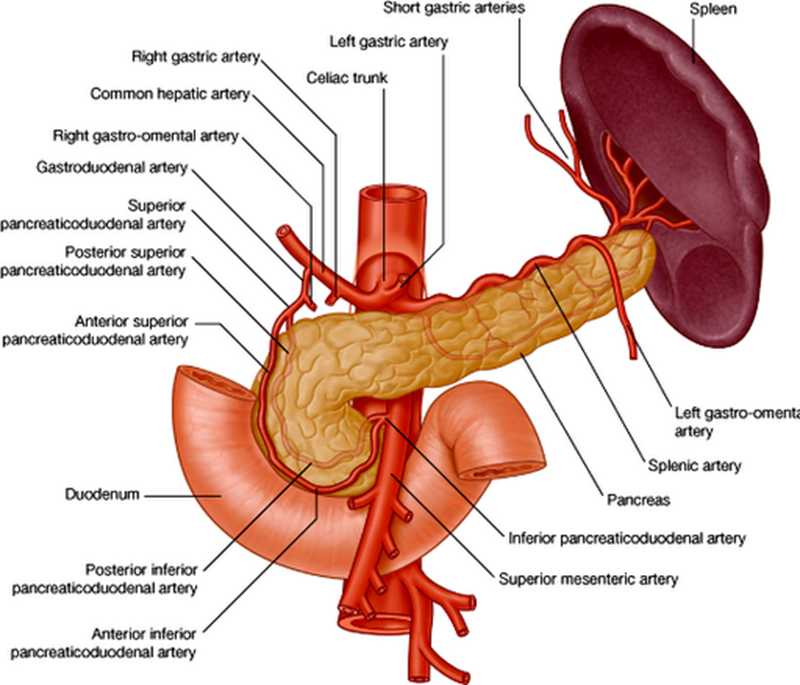
Superior mesenteric artery
•Anterior/posterior inferior pancreaticododenal arteries – pancreas head/uncinate process, duodenum
•Small pancreatic branches – pancreas
•First jejunal branch– distal duodenum
it only supplies the last 2 parts of the duodenum (inferior and ascending)
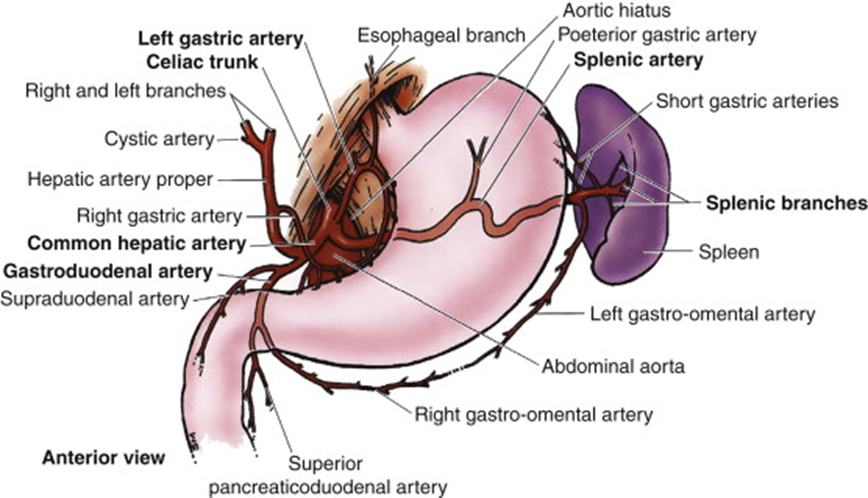
describe the venous drainage of the pancreas, spleen and duodenum
Part of the portal system (including the spleen)
Splenic vein and SMV unite posterior to pancreas neck – hepatic portal vein
Smaller branches follow pattern and names of arteries
Anterior superior PDA - SMV
Posterior superior PDA - hepatic portal vein
A/P inferior PDA – SMV
(look at picture to remember)
PDA= pancreaticoduodenal vein
SMV=superior mesenteric vein
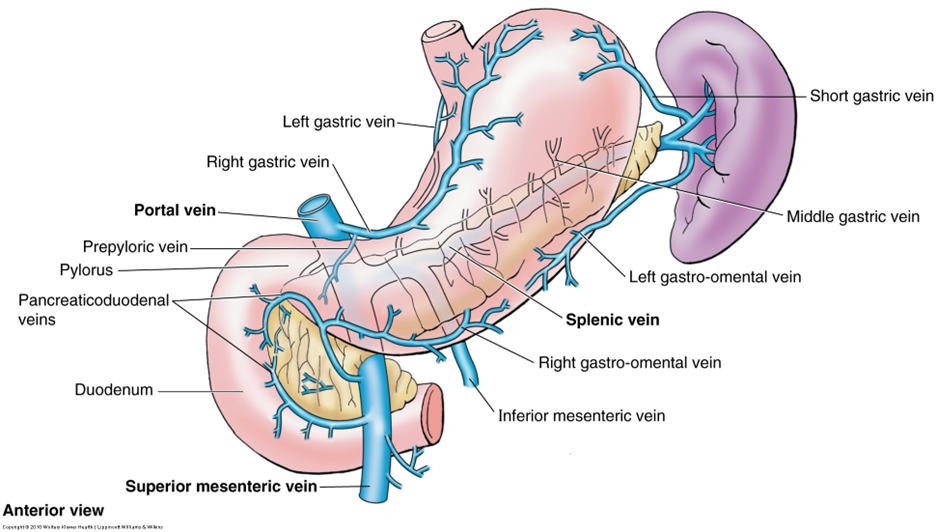
The inferior mesenteric vein (IMV) can drain in the splenic vein (shown in the picture), or in the SMV, this is an anatomical variation
describe the lymphatic drainage of the duodenum, pancreas and spleen
Organ | Primary Nodes | Secondary Nodes | Final Pathway |
|---|---|---|---|
Duodenum | Pancreaticoduodenal, mesenteric | Pyloric, superior mesenteric, celiac | Intestinal trunks → Cisterna chyli → Thoracic duct → Left venous angle |
Pancreas | Head: Pancreaticoduodenal Body/Tail: Pancreaticosplenic | Pyloric, superior mesenteric, celiac | Intestinal trunks → Cisterna chyli → Thoracic duct → Left venous angle |
Spleen | Pancreaticosplenic | Celiac | Intestinal trunks → Cisterna chyli → Thoracic duct → Left venous angle |
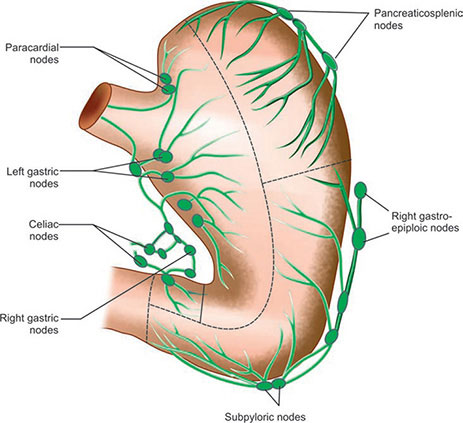
outline the nerve supply of the duodenum, pancreas and spleen
Parasympathetic
•Vagal trunks
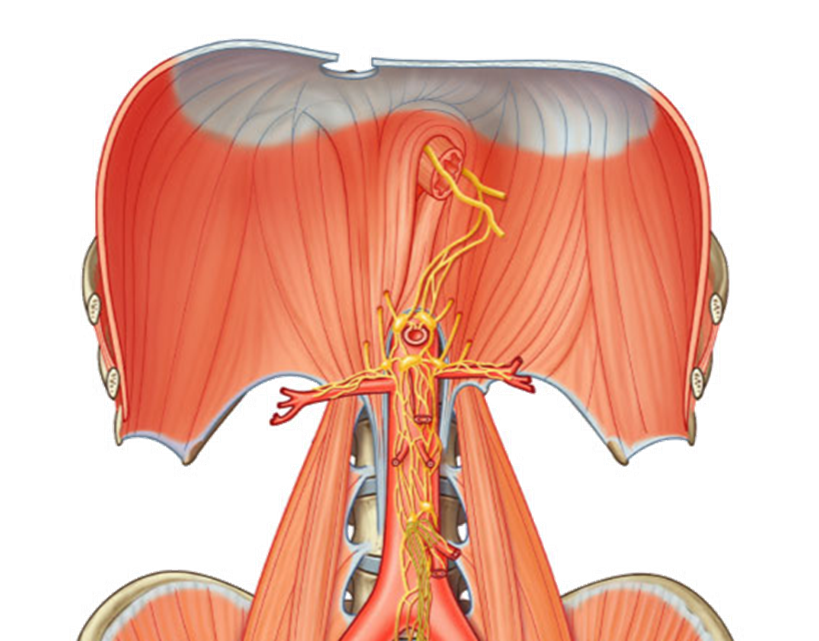
Sympathetic
•Greater and lesser splanchnic – T5-T12
the nerves travel alongside the arteries that go to each organ. They use the same path
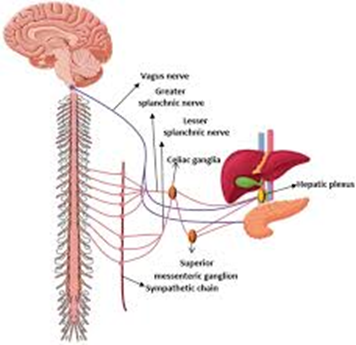
What is the purpose of the suspensory ligament of the duodenum?
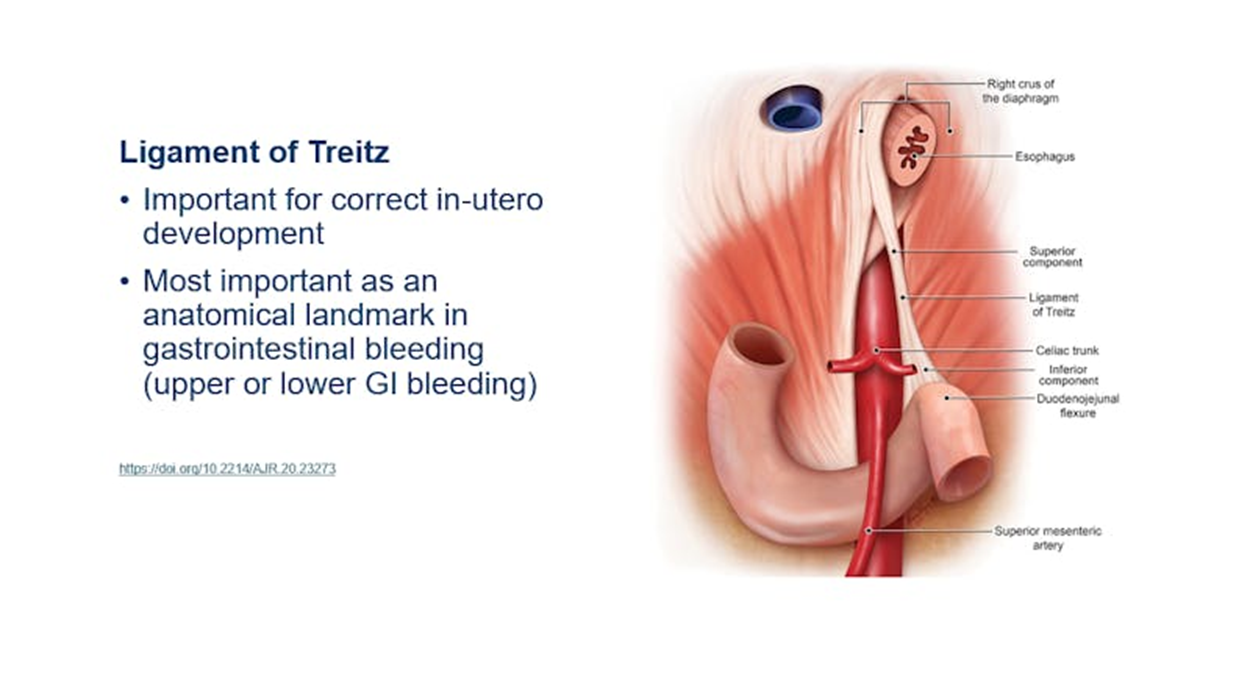
define Splenomegaly and causes
Splenomegaly - enlarged spleen
infections/ haematopoietic conditions (disorders of blood cell formation)
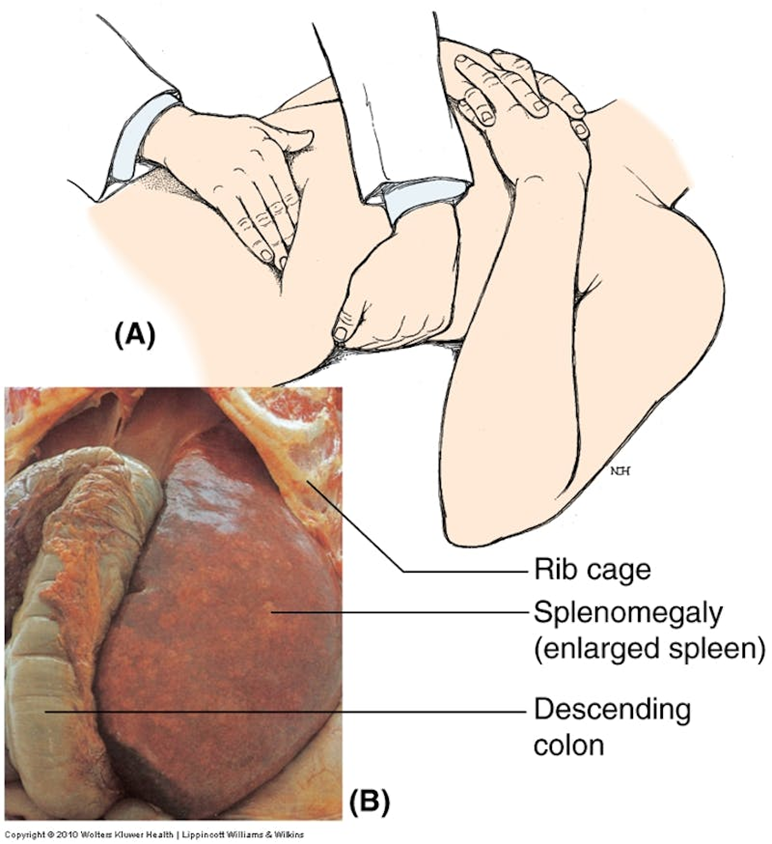
explain the embryology of the pancreas
week 5, from the ventral bud (where the gallbladder and liver also develop) & dorsal bud (comes from the foregut, MUCH larger)
overtime both buds start to mature. The dorsal pancreas grows out into the dorsal mesentery and forms the neck, body and tail of the pancreas. The tail is intraperitoneal, the rest of the pancreas is retroperitoneal.
over week 6 and 7 the ventral pancreas and the common bile duct start to rotate clockwise. The ventral and dorsal buds and ducts start to fuse.
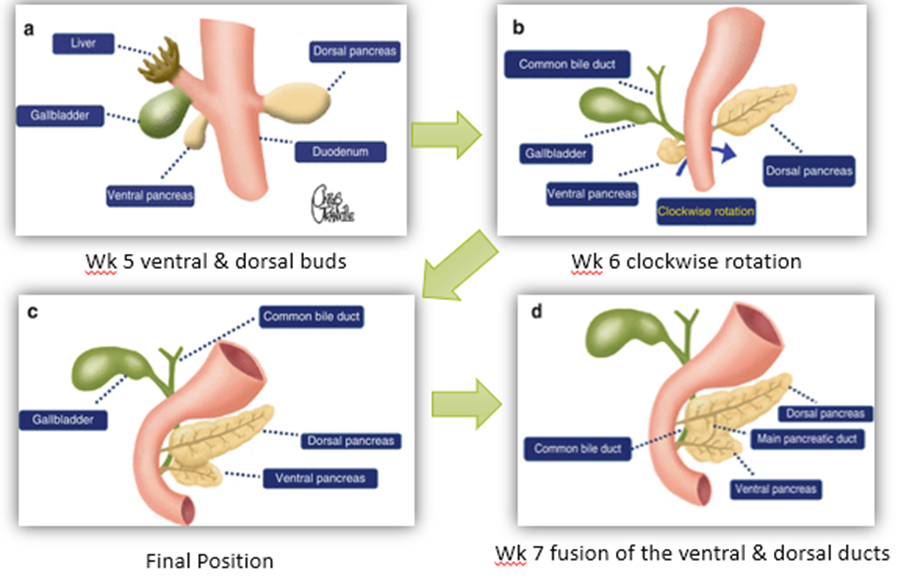
what are the dorsal and ventral ducts of the pancreas called?
Dorsal= Duct of Santorini
Ventral= Duct of Wirsung
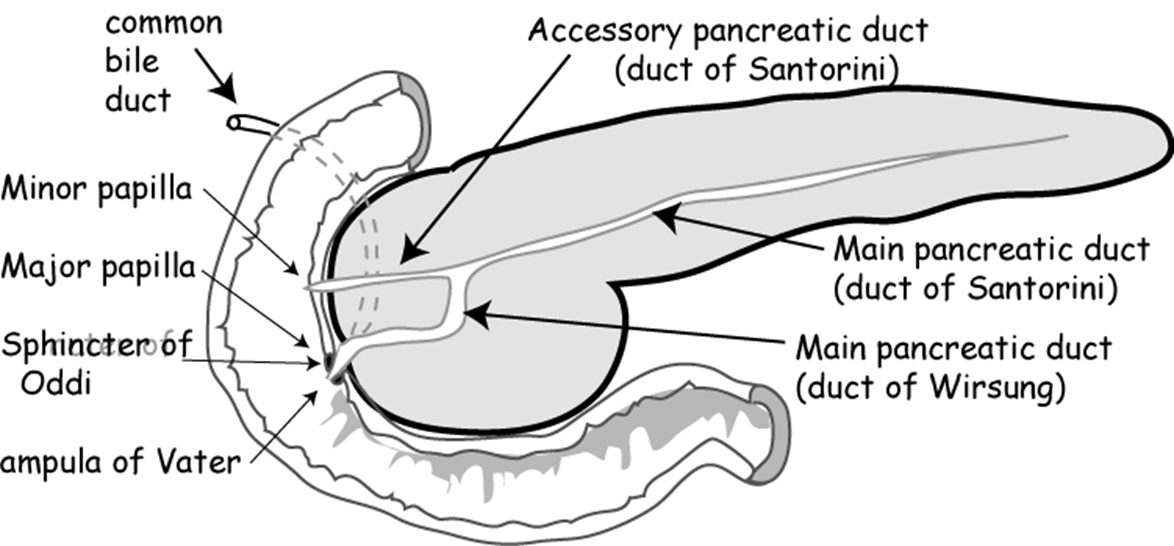
explain the embryological variants of the pancreas
•Pancreatic Divisum
Most common
10% of the population
Failure of fusion embryologically
Often asymptomatic
25% recurrent pancreatitis
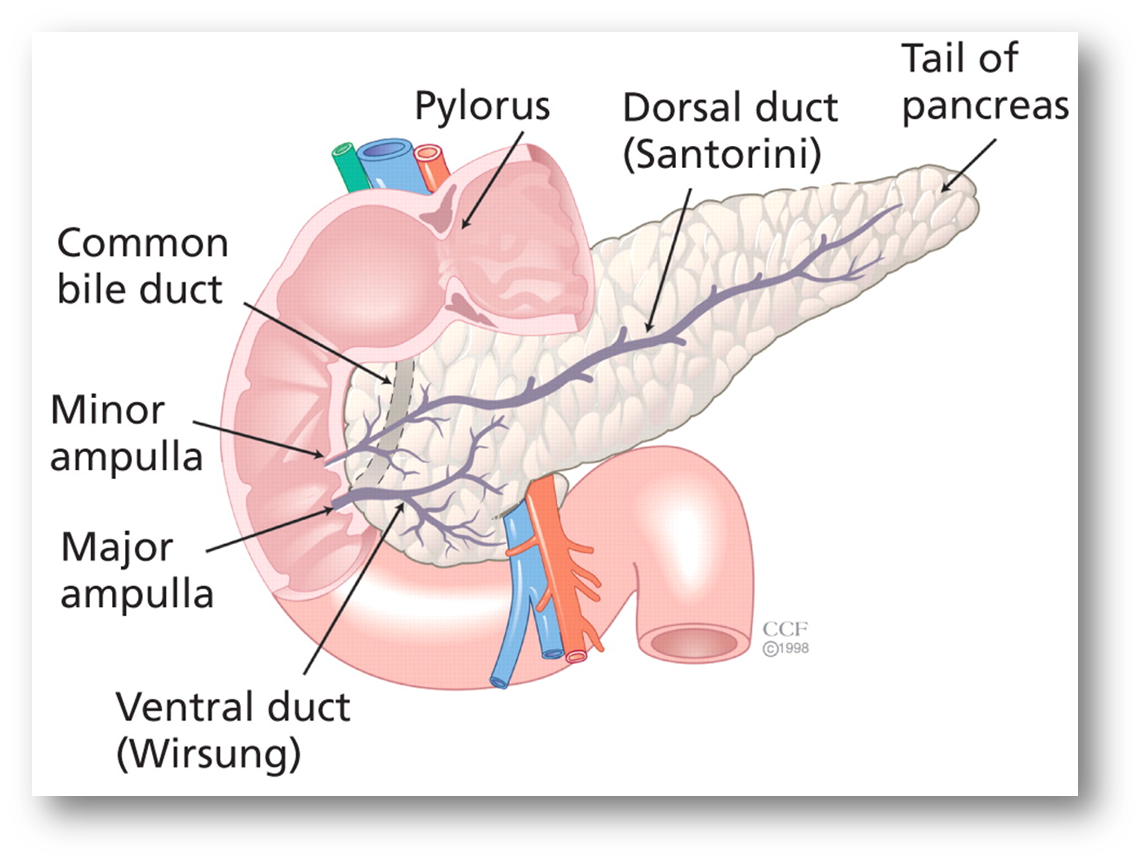
•Annular Pancreas
Rare congenital abnormality
a ring of pancreatic tissue wrapped around duodenum
Associated Down’s syndrome (1 in 4)
Often asymptomatic
Food intolerance, nausea, vomiting, chronic pain
May co-exist with trache-oesophageal fistula
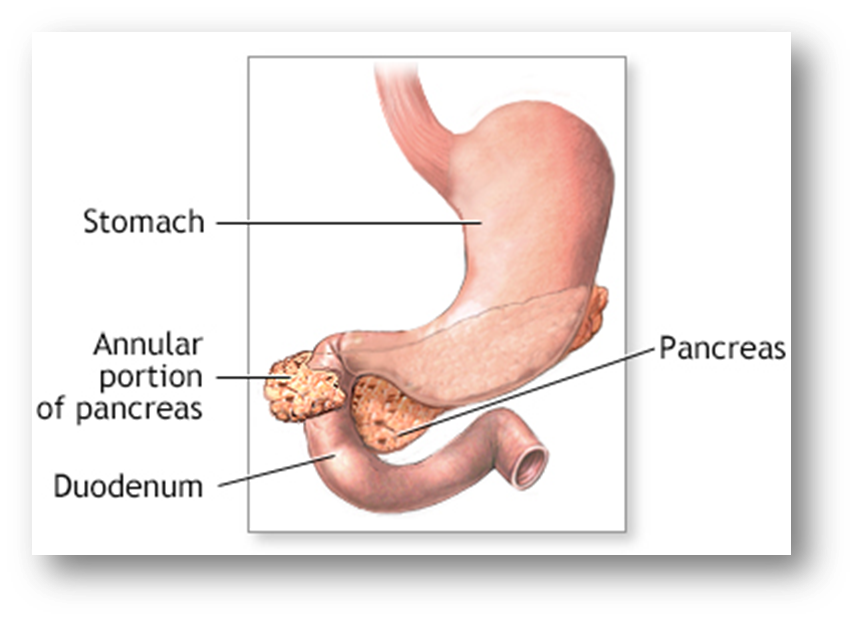
•Pancreatic Rest
Ectopic pancreatic tissue
1-2% autopsy series
Histological variants – ducts, islets, blood supply
can occur throughout GI tract
predominantly gastric & proximal small intestine
Usually asymptomatic
may cause dyspepsia, pancreatitis, mimic tumours
